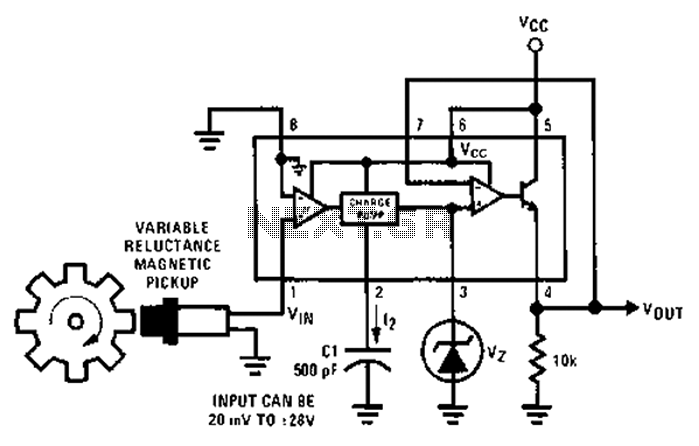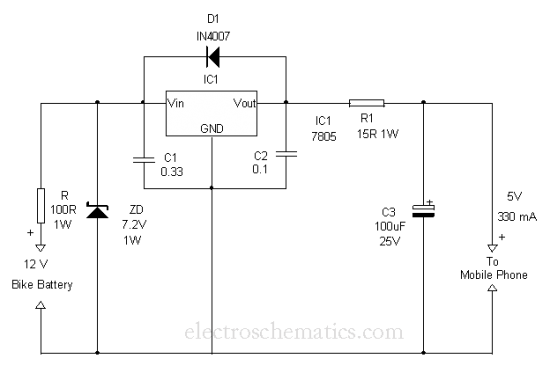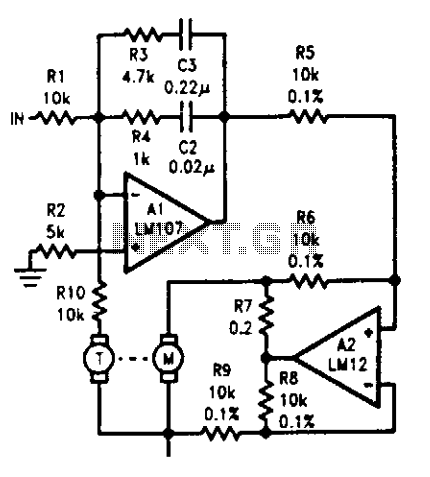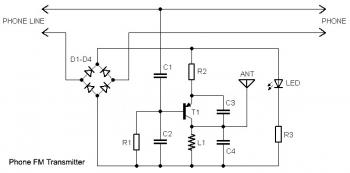
Home Automation through Cellphone Keying
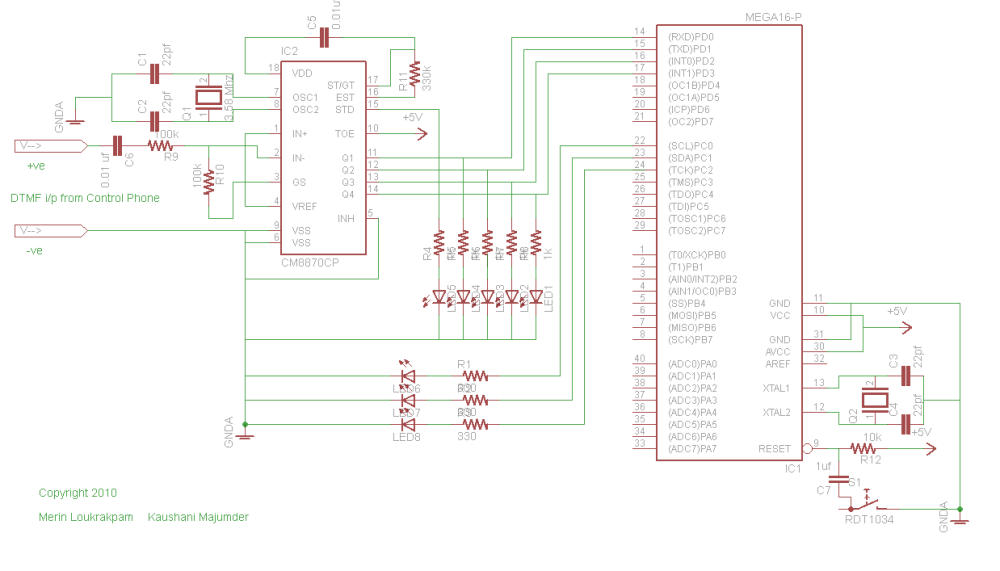
This project was developed during a Bachelor of Engineering course to enable remote control of lights and other appliances within a room. The objective was to address the common issue of forgetting to turn off devices such as fans or air conditioners. The solution proposed was to control these appliances using a cellphone, which is typically always carried. This initiative, termed Home Automation through Cellphone Keying (H.A.C.K), leverages the Dual Tone Multi-Frequency (DTMF) signaling system. Each key press on a standard telephone keypad generates an audible beep, representing a unique combination of two distinct frequencies that define each key. The DTMF receiver circuit is interfaced with an ATmega16 microcontroller (MCU) to manage the operation of external appliances. For demonstration, three LEDs are used to simulate the external devices. An old Nokia 2300 phone operates in automatic answer mode, with an earphone providing input to the DTMF receiver circuit.
The Home Automation through Cellphone Keying (H.A.C.K) project utilizes an innovative approach to control household appliances remotely via a mobile device. The system is built around the Dual Tone Multi-Frequency (DTMF) signaling technology, which is a standard method used in telecommunication signaling over analog telephone lines. Each key on a telephone keypad generates a unique sound composed of two frequencies, allowing the receiver circuit to identify which key has been pressed.
The core component of the project is the ATmega16 microcontroller, which serves as the brain of the operation. The DTMF receiver module decodes the signals generated by the cellphone and sends them to the microcontroller. Based on the received DTMF signals, the ATmega16 can turn the connected appliances on or off. In this project, three LEDs are used to represent the external appliances, demonstrating the system's functionality in a simple yet effective manner.
The setup includes a Nokia 2300 mobile phone configured in automatic answer mode, which allows it to continuously listen for incoming DTMF signals without requiring manual intervention. An earphone connected to the phone serves as the interface for transmitting the DTMF tones to the receiver circuit. The DTMF receiver is designed to process these tones and output corresponding control signals to the microcontroller.
In terms of circuit design, the DTMF receiver is connected to the ATmega16 through digital input pins. The microcontroller is programmed to recognize specific DTMF tones and execute predefined actions, such as lighting up an LED or turning it off. This project not only showcases the practical application of DTMF technology but also emphasizes the importance of microcontroller programming in modern automation systems. Overall, the H.A.C.K project exemplifies how simple electronic components can be integrated to create an effective home automation solution.This is a project I did during my B. E course. I always wanted to control my lights and other appliances in my room remotely while I`m somewhere else. Many a times I forget to switch off the fan or AC in my room and then I have to go back and switch it off.
I always wondered how cool it would be if I could control my appliances through something li ke my cellphone (which I never forget to take). Well now I can see that dream right in front of me. Yes, its yet another hobby project by Kaushani and me. Its theHome Automation through Cellphone Keying(H. A. C. K)`. For those who are not aware of, for every key press on a standard telephone keypad an audible beep` is generated. It actually is a signal which is a combination of two distinct frequencies i. e. every key is uniquely defined by the combination of two distinct frequencies. Many (multiple) frequencies are used in which combination of any two defines a key on your keypad hence the name Dual Tone Multiple Frequencies (DTMF)` The DTMF receiver circuit is interfaced with an ATmega16 MCU which is used to drive the external appliances ON or OFF.
For demonstration purpose I`ve used 3 leds to be my external appliances. I`ve also used my old NOKIA 2300 in the automatic answer mode and the earphone is used to give input to the DTMF receiver circuit. 🔗 External reference
The Home Automation through Cellphone Keying (H.A.C.K) project utilizes an innovative approach to control household appliances remotely via a mobile device. The system is built around the Dual Tone Multi-Frequency (DTMF) signaling technology, which is a standard method used in telecommunication signaling over analog telephone lines. Each key on a telephone keypad generates a unique sound composed of two frequencies, allowing the receiver circuit to identify which key has been pressed.
The core component of the project is the ATmega16 microcontroller, which serves as the brain of the operation. The DTMF receiver module decodes the signals generated by the cellphone and sends them to the microcontroller. Based on the received DTMF signals, the ATmega16 can turn the connected appliances on or off. In this project, three LEDs are used to represent the external appliances, demonstrating the system's functionality in a simple yet effective manner.
The setup includes a Nokia 2300 mobile phone configured in automatic answer mode, which allows it to continuously listen for incoming DTMF signals without requiring manual intervention. An earphone connected to the phone serves as the interface for transmitting the DTMF tones to the receiver circuit. The DTMF receiver is designed to process these tones and output corresponding control signals to the microcontroller.
In terms of circuit design, the DTMF receiver is connected to the ATmega16 through digital input pins. The microcontroller is programmed to recognize specific DTMF tones and execute predefined actions, such as lighting up an LED or turning it off. This project not only showcases the practical application of DTMF technology but also emphasizes the importance of microcontroller programming in modern automation systems. Overall, the H.A.C.K project exemplifies how simple electronic components can be integrated to create an effective home automation solution.This is a project I did during my B. E course. I always wanted to control my lights and other appliances in my room remotely while I`m somewhere else. Many a times I forget to switch off the fan or AC in my room and then I have to go back and switch it off.
I always wondered how cool it would be if I could control my appliances through something li ke my cellphone (which I never forget to take). Well now I can see that dream right in front of me. Yes, its yet another hobby project by Kaushani and me. Its theHome Automation through Cellphone Keying(H. A. C. K)`. For those who are not aware of, for every key press on a standard telephone keypad an audible beep` is generated. It actually is a signal which is a combination of two distinct frequencies i. e. every key is uniquely defined by the combination of two distinct frequencies. Many (multiple) frequencies are used in which combination of any two defines a key on your keypad hence the name Dual Tone Multiple Frequencies (DTMF)` The DTMF receiver circuit is interfaced with an ATmega16 MCU which is used to drive the external appliances ON or OFF.
For demonstration purpose I`ve used 3 leds to be my external appliances. I`ve also used my old NOKIA 2300 in the automatic answer mode and the earphone is used to give input to the DTMF receiver circuit. 🔗 External reference

